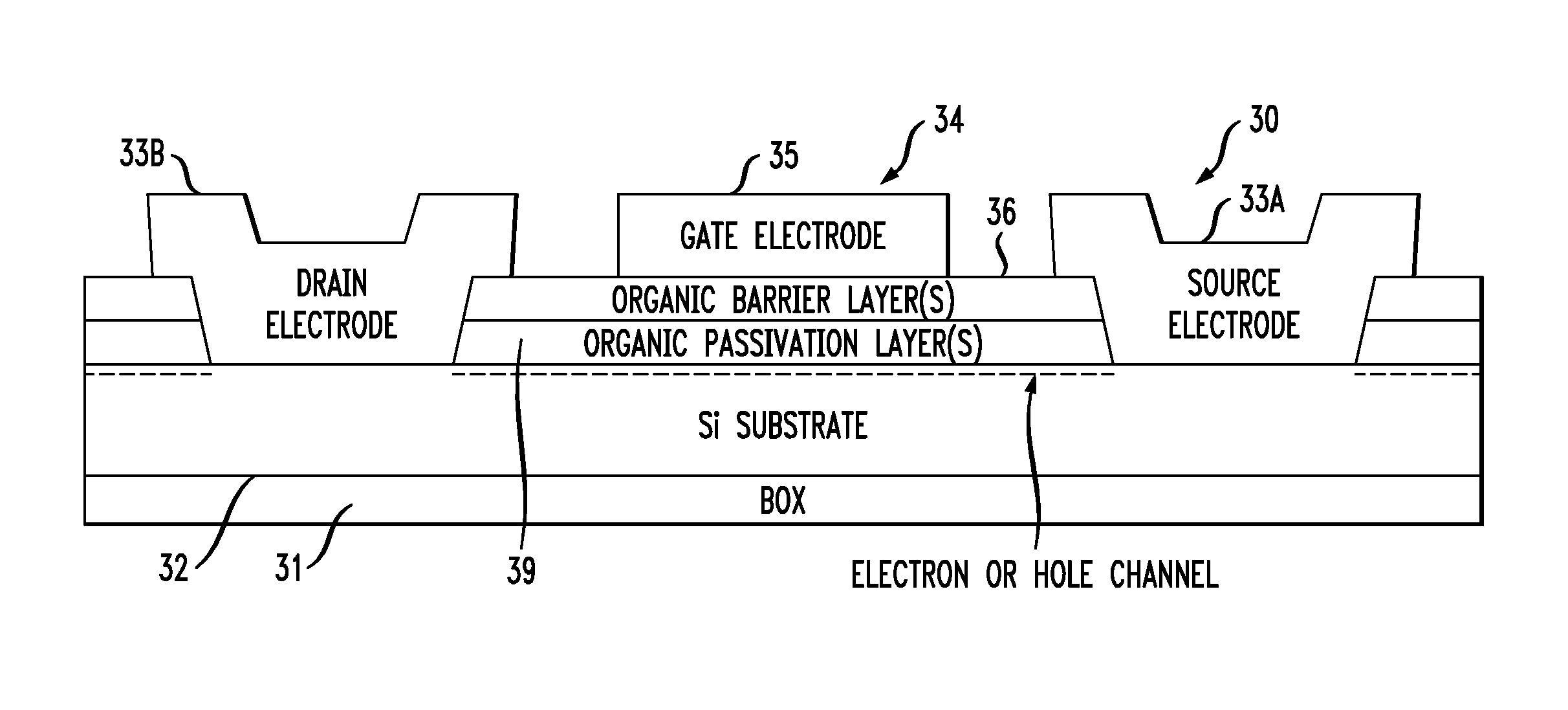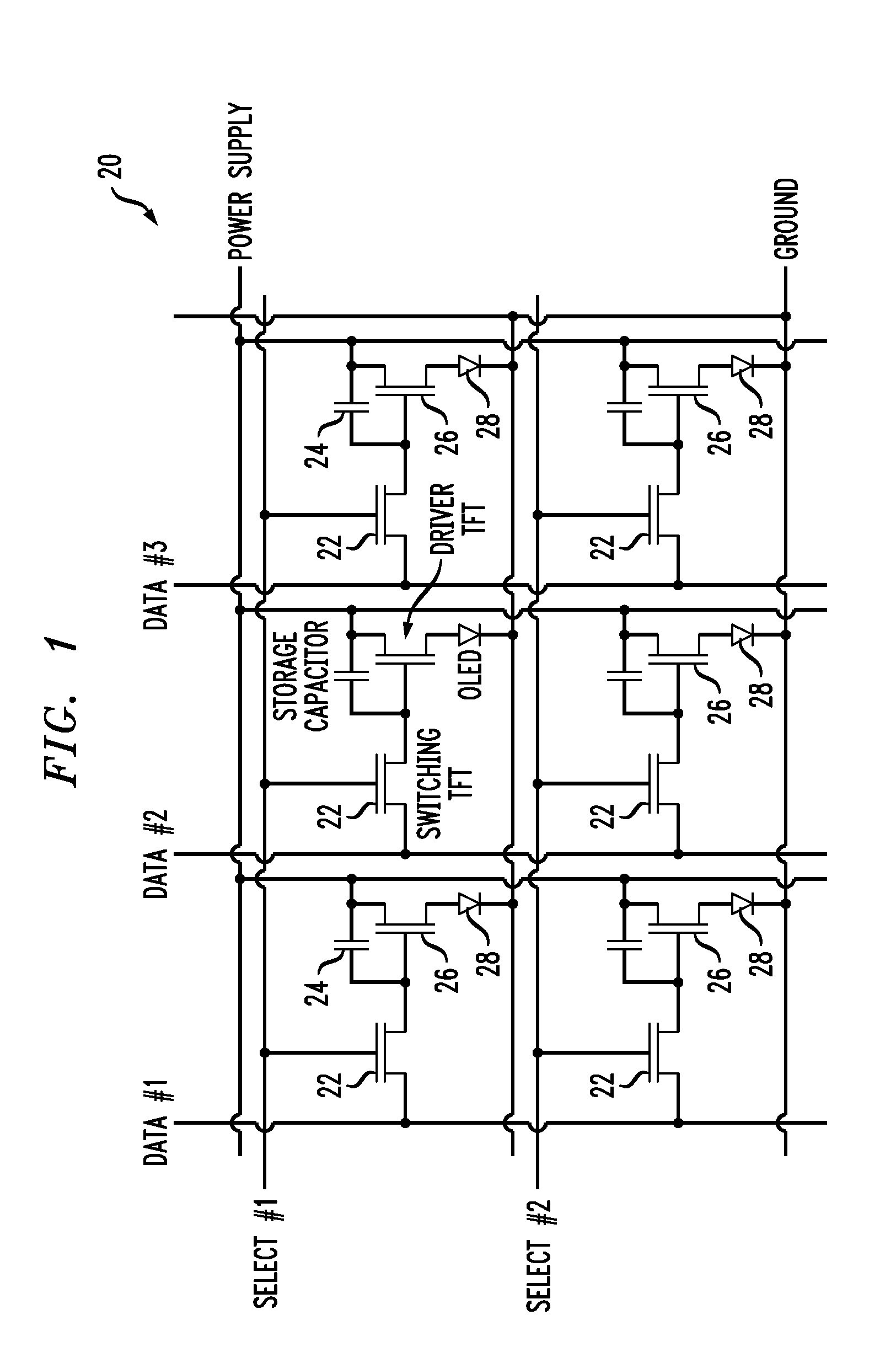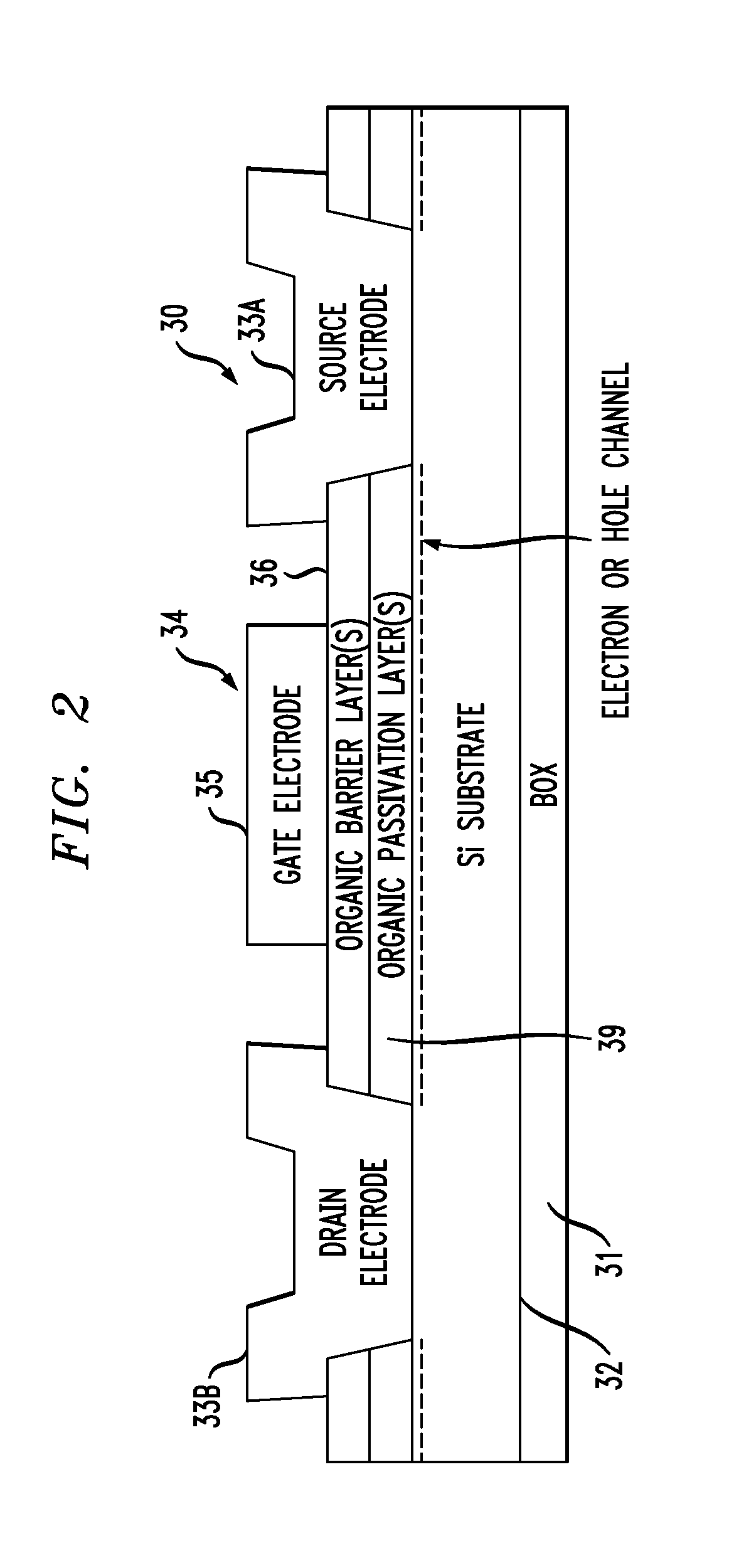Hybrid high electron mobility transistor and active matrix structure
a high electron mobility, active matrix technology, applied in the direction of electroluminescent light sources, electric lighting sources, semiconductor lamp usage, etc., can solve the problem of too low carrier mobility of a-si:h (electron mobility of about 1 cmsup>2, ns) to provide sufficient drive current at short tft channel widths, and increase the processing cost of a-si:h active matrix circuits
- Summary
- Abstract
- Description
- Claims
- Application Information
AI Technical Summary
Benefits of technology
Problems solved by technology
Method used
Image
Examples
Embodiment Construction
[0036]Thin-film hybrid high electron mobility transistors (HEMTs) are disclosed that include crystalline, inorganic semiconductor channels and organic gate barrier layers. Such transistors are used in some embodiments for forming high resolution active matrix displays. A backplane refers to an array of transistors (active devices) used for addressing and programming passive devices such as light emitting diodes, liquid crystal displays, photosensitive materials (e.g. for x-ray imaging), or sensors (e.g. piezoelectric materials for sensing pressure). The backplane also contains address lines, program lines, power supply lines, and typically storage capacitors which are fabricated using the same process technology as that of the transistors. Arrays of passive devices addressed / programmed by the backplane are typically referred to as the frontplane. An active matrix refers to the combination of a backplane and a frontplane. Schematic pixel circuits of active-matrix arrays comprised of ...
PUM
 Login to View More
Login to View More Abstract
Description
Claims
Application Information
 Login to View More
Login to View More - R&D
- Intellectual Property
- Life Sciences
- Materials
- Tech Scout
- Unparalleled Data Quality
- Higher Quality Content
- 60% Fewer Hallucinations
Browse by: Latest US Patents, China's latest patents, Technical Efficacy Thesaurus, Application Domain, Technology Topic, Popular Technical Reports.
© 2025 PatSnap. All rights reserved.Legal|Privacy policy|Modern Slavery Act Transparency Statement|Sitemap|About US| Contact US: help@patsnap.com



